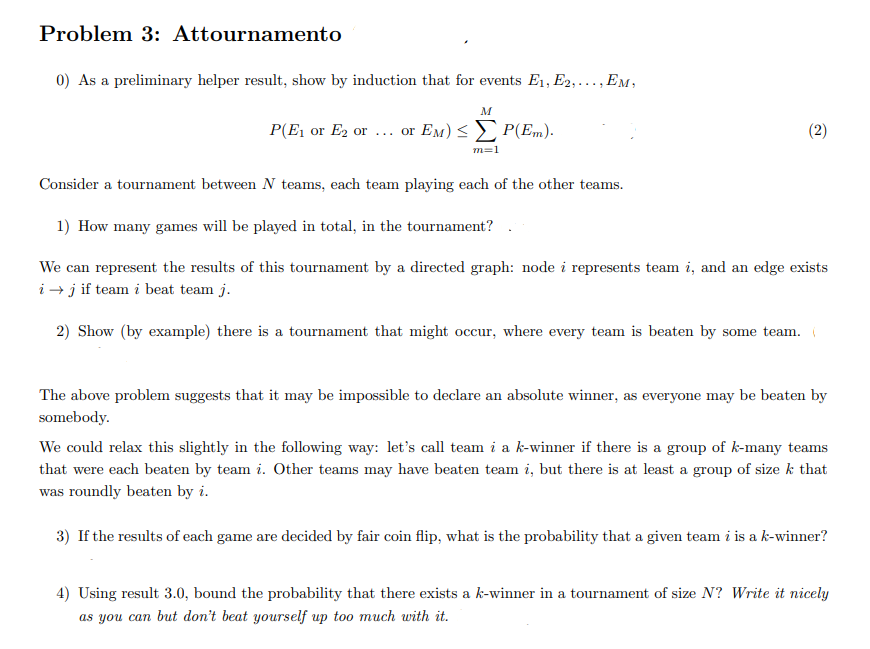Consider a tournament between N teams, each team playing each of the other teams. 1) How many games will be played in total, in the tournament?
Consider a tournament between N teams, each team playing each of the other teams. 1) How many games will be played in total, in the tournament?
Algebra & Trigonometry with Analytic Geometry
13th Edition
ISBN:9781133382119
Author:Swokowski
Publisher:Swokowski
Chapter10: Sequences, Series, And Probability
Section10.8: Probability
Problem 32E
Related questions
Question
please provide complete handwritten solution for Q1

Transcribed Image Text:Problem 3: Attournamento
0) As a preliminary helper result, show by induction that for events E1, E2,..., Em,
P(E1 or E2 or .. or EM) < P(Em).
(2)
m=1
Consider a tournament between N teams, each team playing each of the other teams.
1) How many games will be played in total, in the tournament?
We can represent the results of this tournament by a directed graph: node i represents team i, and an edge exists
i → j if team i beat team j.
2) Show (by example) there is a tournament that might occur, where every team is beaten by some team.
The above problem suggests that it may be impossible to declare an absolute winner, as everyone may be beaten by
somebody.
We could relax this slightly in the following way: let's call team i a k-winner if there is a group of k-many teams
that were each beaten by team i. Other teams may have beaten team i, but there is at least a group of size k that
was roundly beaten by i.
3) If the results of each game are decided by fair coin flip, what is the probability that a given team i is a k-winner?
4) Using result 3.0, bound the probability that there exists a k-winner in a tournament of size N? Write it nicely
as you can but don't beat yourself up too much with it.
Expert Solution
This question has been solved!
Explore an expertly crafted, step-by-step solution for a thorough understanding of key concepts.
This is a popular solution!
Trending now
This is a popular solution!
Step by step
Solved in 2 steps

Recommended textbooks for you

Algebra & Trigonometry with Analytic Geometry
Algebra
ISBN:
9781133382119
Author:
Swokowski
Publisher:
Cengage

Algebra & Trigonometry with Analytic Geometry
Algebra
ISBN:
9781133382119
Author:
Swokowski
Publisher:
Cengage